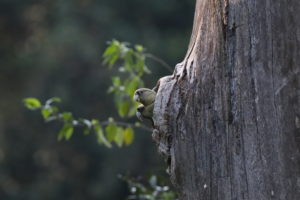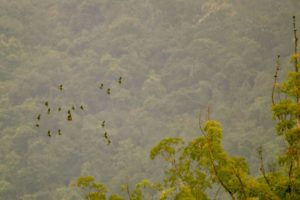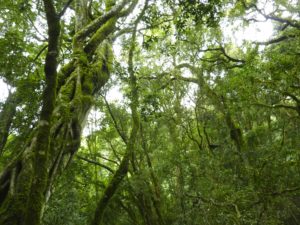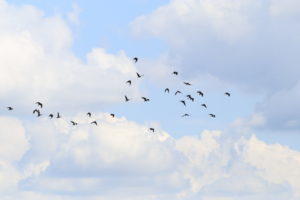
In December 2022, South Africa named the Cape parrot as its Parrot of the Year. This unusual and highly endangered species (Poicephalus robustus) inhabits isolated patches of forest in the Eastern Cape, KwaZulu-Naal and Limopo areas of South Africa, the only country where it can be found. The International Union for Conservation of Nature estimates fewer than 1,800 remaining individuals, with a projected decline without immediate action. Since inland forests are their primary habitat, much of it has been affected by exploitive logging and deforestation, especially of the large yellowwood trees which they use for nesting and food.

The Cape parrot is one of the few parrot species that is sexually dimorphic and can be differentiated by gender. Females have bright orange patches on their foreheads, and all adults have small orange patches on their shoulders and leg feathers. This species is not to be confused with two similar ones: the Kuhls Cape parrot or the brown-necked Parrot (Poicephalus fuscicollis) of West Africa; and the Grey-headed Parrot (Poicephalus fuscicollis suahelicus) of East Africa. These two species are found more widely in Africa and are not as endangered at this point. In captivity, we most often see the brown-necked parrot.
Cape Threats
There are several emerging threats to the Cape parrot. Climate change is causing a shift in their habitat; a particular borer beetle is killing the important yellowwood trees valued for food and nesting; and the Cape is especially susceptible to Psittacine Beak & Feather disease, which is often terminal.

The Cape parrot and Mistbelt Forest Conservation Action Plan was developed in 2019 as a 10-year roadmap for Cape parrot conservation, both for the species and their forests. As part of this process, there were 48 stakeholders representing 23 organizations, departments, or institutions. Its goal: “A thriving population of Cape Parrots acting as a flagship for the protection and recovery of indigenous forests in South Africa, for the shared benefit of people and nature.”
Lafeber’s GLOBAL PARROT grant this month goes to support the implementation of Cape Parrot and Mistbelt Forest Action Plan which aims to double the area of forest protection for Capes over 10 years. The grant will go towards supporting two key actions of the plan, a recently launched monitoring program of the health of remaining Cape parrot habitat and research into an isolated and threatened population of Cape parrots in the Magoebaskloof area of Limpopo province.

You can learn more about the Cape Parrot Action Group here, or read the full action plan.
If you would also like to help, go to www.parrots.org/donate and designate your donation for this purpose.






Glad this species is being recognized and helped. ALL parrots species – indeed, all birds in general – are in various stages of trouble, with changing environments, loss of habitat and poaching. It is good to know that there are those working to help them and these projects are worthy of support from all of us who can spare it.